Revel's Ranger, a 115mm-travel bike that's claimed to be ready for anything from cross-country through to trail riding, is definitely a downcountry bike, to use an on-trend term. It has been my long-term test rig throughout 2022.
Having spent all of last year on my trusty Marin El Roy long-term bike and the Lauf True Grit, I fancied skipping to the other end of the mountain bike spectrum and getting my hands on something nice and light, and all being well, much friendlier up the hills.
The UK's Revel distributor, Cyclorise, sent me a frameset for the year, which I've fitted out with a range of components that I reckon will suit the bike well.
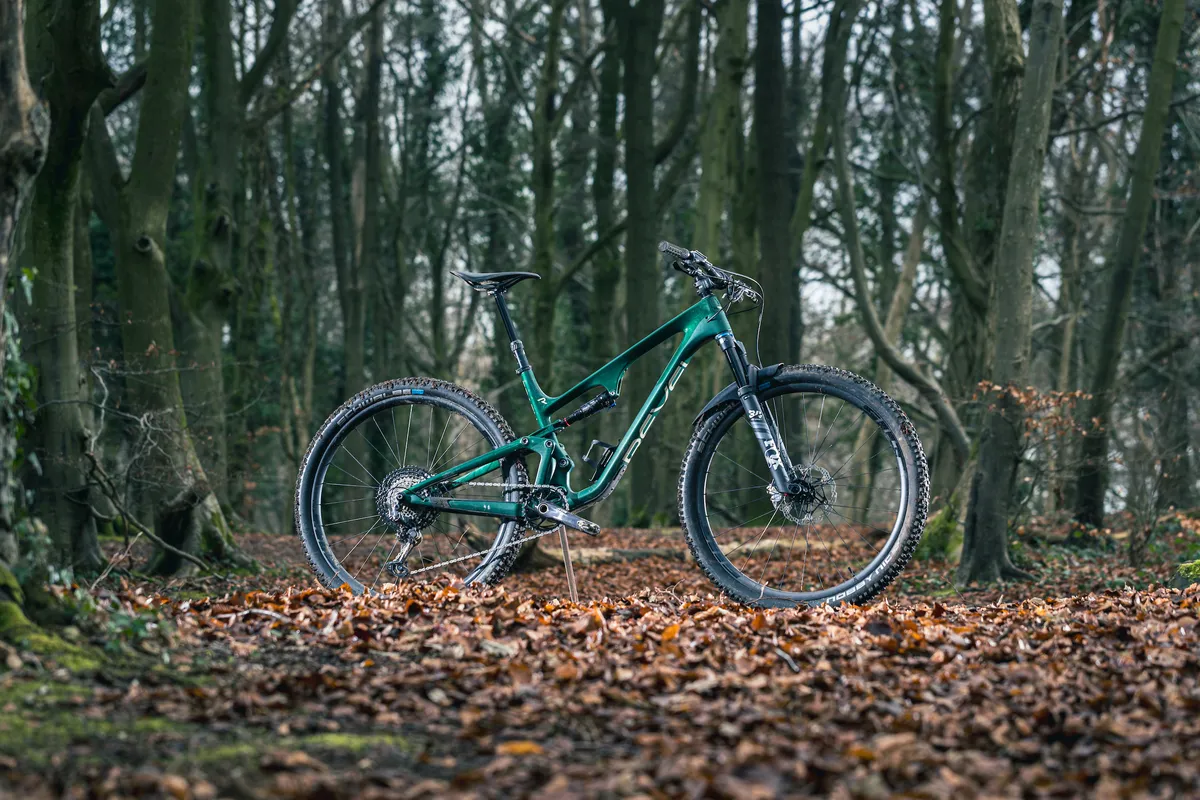
Revel Ranger custom build update three
Autumn was a busy time at BikeRadar, with a raft of bike launches (including the excellent Scott Genius and category-leading Orbea Oiz) and tons of testing filling my months.
In addition to the Scott and Orbea, I also rode the new Merida One Sixty. It was launched at The Ex Enduro, a three-day event on Exmoor in the south west of England.
With two days of riding beforehand, and a chunk of climbing in the race, I was happy to have a decent base of fitness, in part thanks to the Ranger.
Riding the Ranger really encourages you to push hard, sprinting climbs and heading out for long days – both ideal for getting that base up, and you ready to race.
The race was a good reminder, though, of how different long- and short-travel bikes feel.
The Ranger is light and whippy, but skips and stutters when rattling over rough, rocky terrain. Add 40mm of travel, and everything changes. It's smooth and composed, but harder work to get up to speed and less reactive when the power gets applied.
Post-race, I jumped straight onto our annual disc brake test. I spent a lot of time on more powerful eMTB and enduro brakes, as well as a host of lightweight XC brakes.

Here, the Ranger became a useful test mule.
I might not have fed every brake’s hose through the frame’s internal routing (and so the bike’s clean lines were disturbed by some Heath Robinson Velcro strapping), but the Ranger clocked up some serious vertical height gain and loss.
I’d been running Hope’s lightweight XCR brakes for the year, and now they’re back in place for the last couple of months' riding. They’ve proved easy to bleed (again!), and I’ve been impressed with their performance over the past 10 months or so.
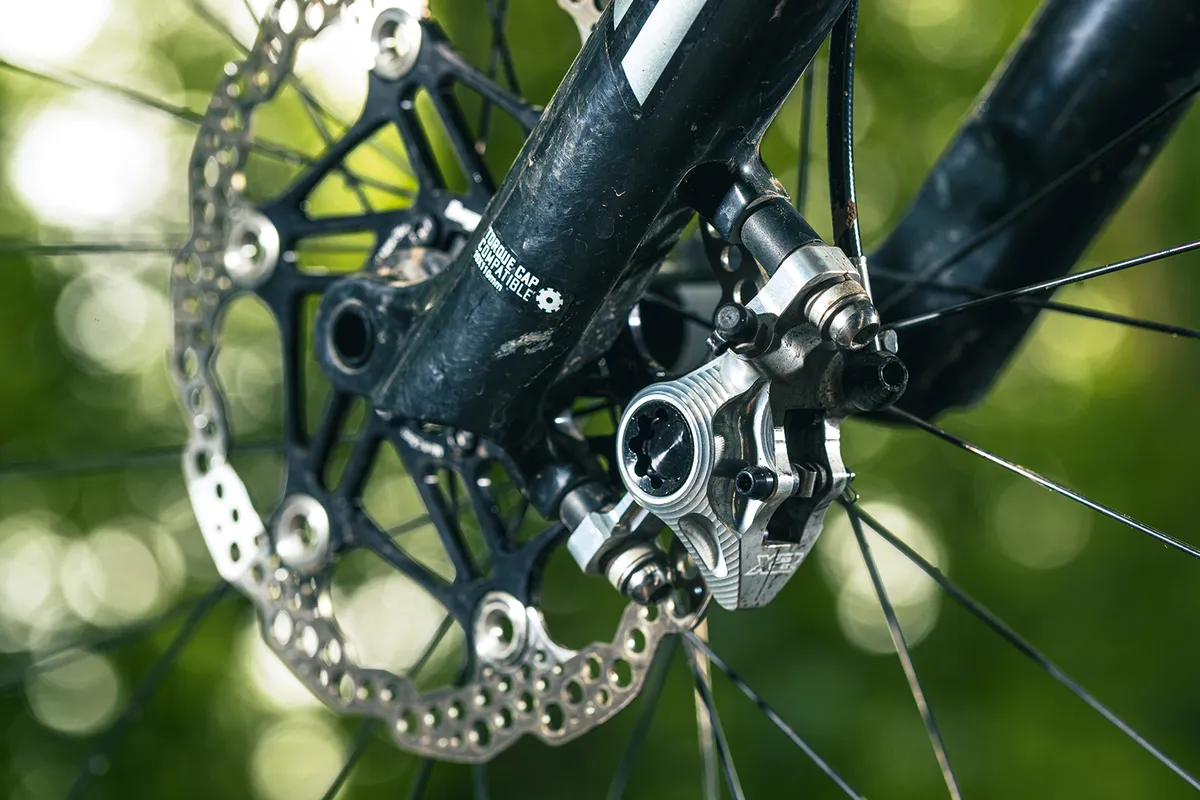
They don’t have quite the punch of their more powerful Hope counterparts, but I like their lever feel – it’s a little more direct than the Tech 4 X2, with less lever pull and slightly more firmness. As ever, back-to-back testing really helps you delve deep into a product’s performance.
In the year that I’ve been riding the Ranger, the ‘downcountry’ genre of bike has truly flourished. New bikes, from brands large and small, have been launched on an almost monthly basis, while the range of components suited to this midi-sized type of bike has also expanded.

I started the year wondering how this genre of bike fits in to the grand scheme of things. Are they a quiver-killer, able to replace a cross-country bike and a trail bike, or do they stand alone as part of an ever-expanding, increasingly niche set of compartmentalised sub-divisions of the ‘mountain bike’.
What’s clear, to me at least, is that the downcountry bike is a bike that ‘should’ appeal to the broadest range of riders, so long as it’s done right.
Sure, the long-travel rig raced by the best in the world is a machine many of us aspire to own, even if we’ll never really challenge the absolute limits of our burly 160mm bikes.
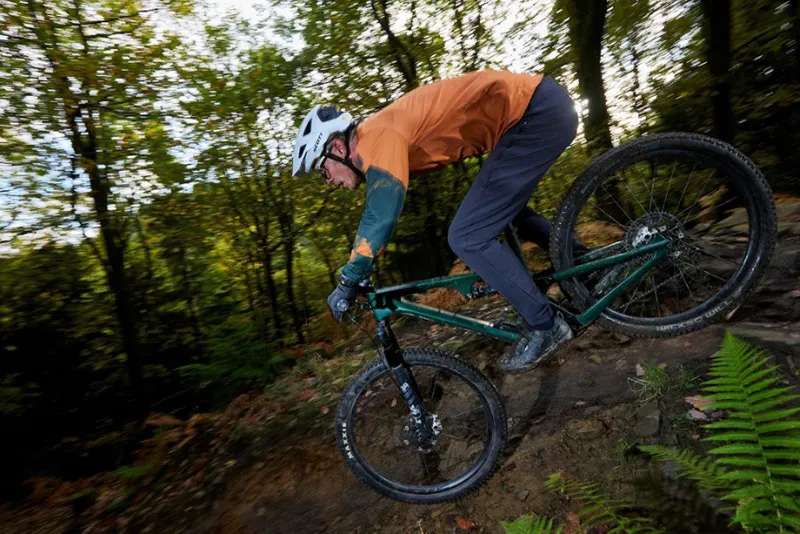
But spending a bit of time on a shorter-travel bike that hasn’t shied away from tackling some ‘bigger’ terrain has really opened the eyes to what’s possible on a mountain bike.
It’s safe to say my Revel has ended up at the more XC end of the DC spectrum (I could have taken another tack if I’d wanted).
The fork, wheels, brakes and drivetrain are all lighter-weight components. And, truth be told, if I was going to rally round the steepest of my test tracks, there are better bikes out there.
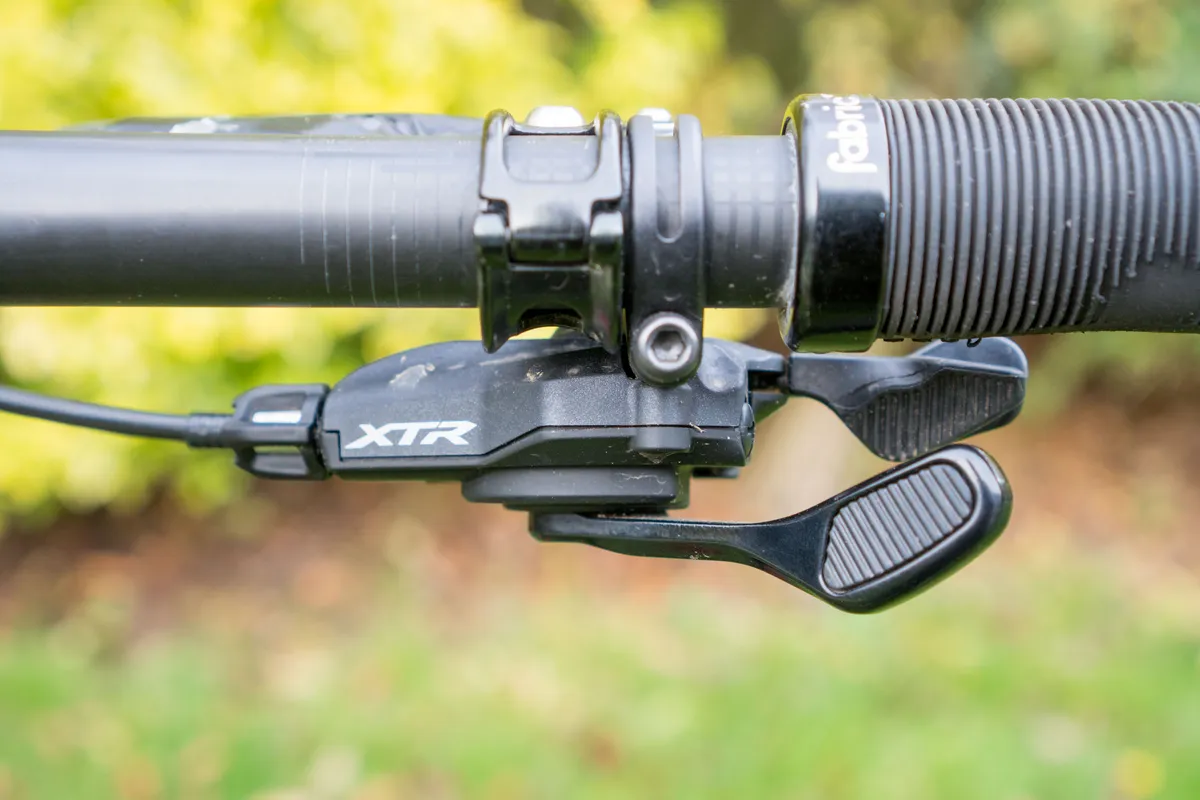
However, I’ve come to the realisation that I really like riding round on a bike that doesn’t suck the fun out of any upward incline.
The Ranger is a bike that doesn’t instantly sanitise every track into a twisty blancmange, and makes me really consider where my front wheel is pointed. I like riding a bike that causes me to work out whether (and how) I’m going to assist the rear wheel in dodging the hole/rock/root that’s threatening the structural integrity of my rear tyre.
The modern downcountry bike harks back to the old-school definition of what a ‘mountain bike’ really, originally, was. It’s a bike for getting out there, into the hills; for riding up them, and then back down.
It’ll tackle long rides and short too, and with the ever-growing range of frame and kit options out there, can be tailored to whatever you want your ‘mountain bike’ to be.
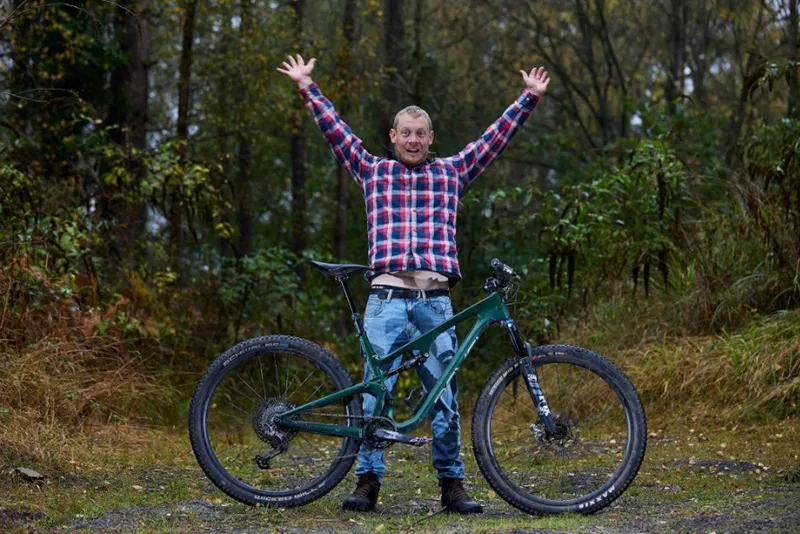
Revel Ranger custom build update two
Shortly after I last updated you on my Ranger, I disappeared from the world of BikeRadar for a 12-week sabbatical – hence quite a long gap since my last post.
I had a lovely time riding my gravel bike around Europe, bobbing about England, Scotland, Wales and Portugal, and then three weeks of mountain biking in the Alps.
However, this didn’t leave much time to ride the Ranger, because I took a longer-travel bike to the mountains.

When I built the bike, I bolted on a load of lightweight components – the Ranger is as happy pared down as it is bulked up. This meant Fox’s Step-Cast 34 fork, carbon hoops from SILT and Hope’s racey XCR brakes.
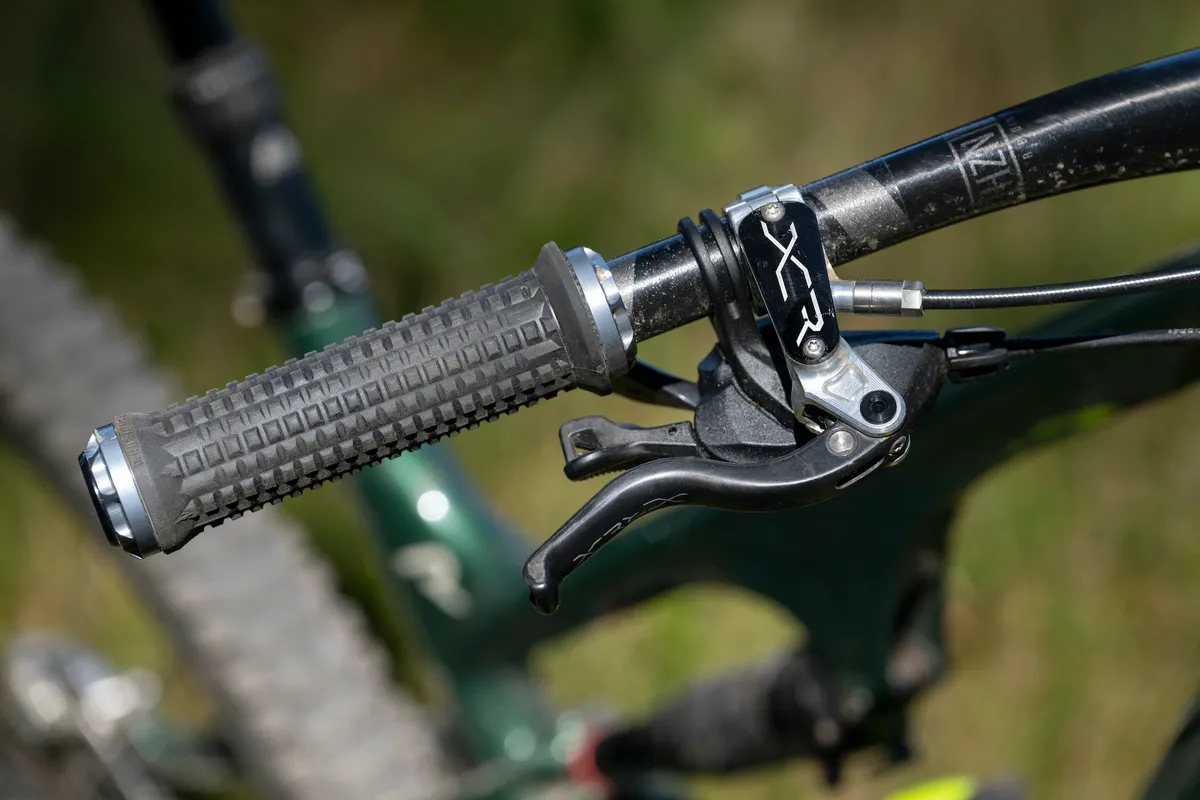
Let's go racing
I hadn't intended on racing the bike on a brief trip up to Scotland in mid-June – I’d planned on using my post-bikepacking trip fitness to tackle some big rides in the mountains, picking off some Munros and exhausting myself with long hilly miles.
However, a late-night call on a Thursday night from a friend who had an entry to the legendary 10 Under the Ben race could mean only one thing – his buddy had pulled out at late notice, leaving Luke in the lurch with his Pairs category entry.
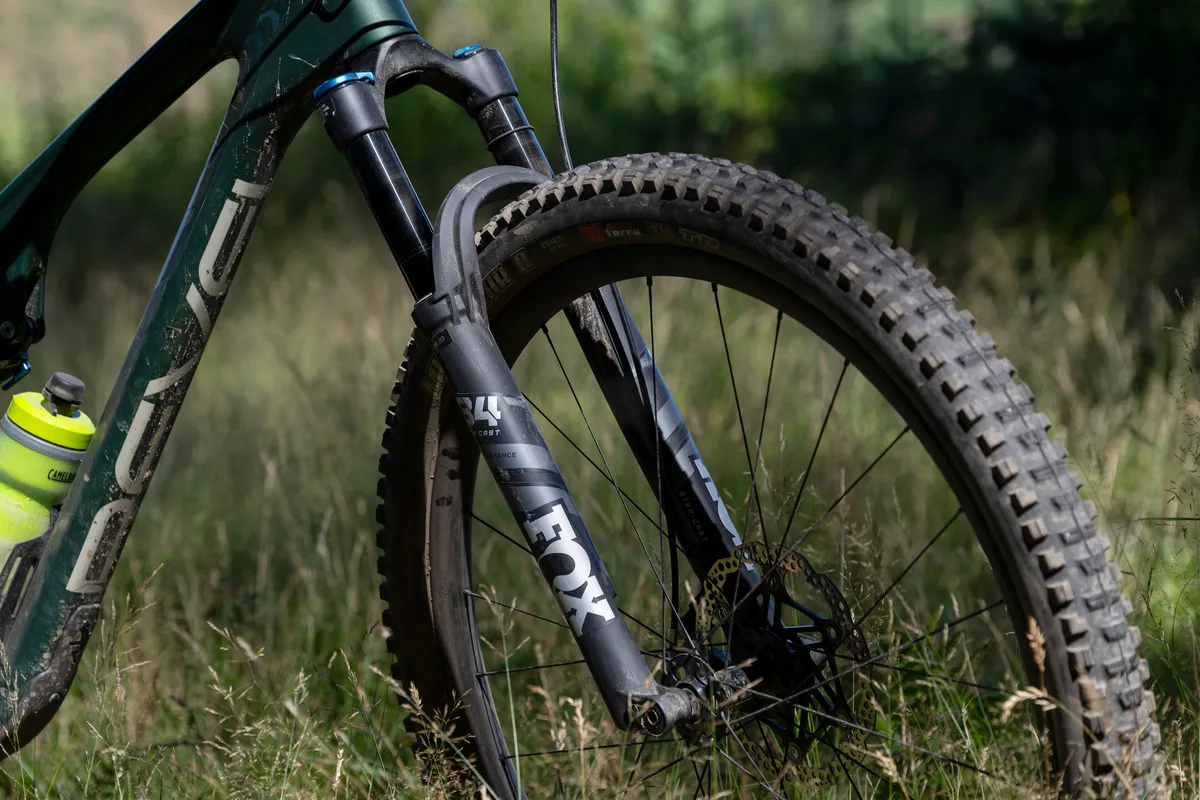
Luckily for him, I was 90 minutes away in Aviemore, and so early that Saturday I packed my van with my two changes of (trail riding) kit, and as many snacks as I could squeeze in and drove into the torrential rain of Fort William.
10 Under the Ben uses a large portion of the Ben Nevis World Cup XC course. It’s a 10-hour race, with the idea that you (and/or your team) complete as many laps in 10 hours as possible – they even allow you to finish any lap started just before the 10 hours is up.
Solo, pairs and quads are possible, with all categories being hotly contested. It’s been quite a few years since the event, once a mainstay of the Scottish XC scene, has run, so plenty of riders had turned out.
Luke took on the first lap, so I had a little more time to consume pastry-based calories and coffee-flavoured caffeine. It wouldn’t be long before my heart-rate went from resting to bursting-out-of-my-chest, so I might as well make the most of my resting HR.
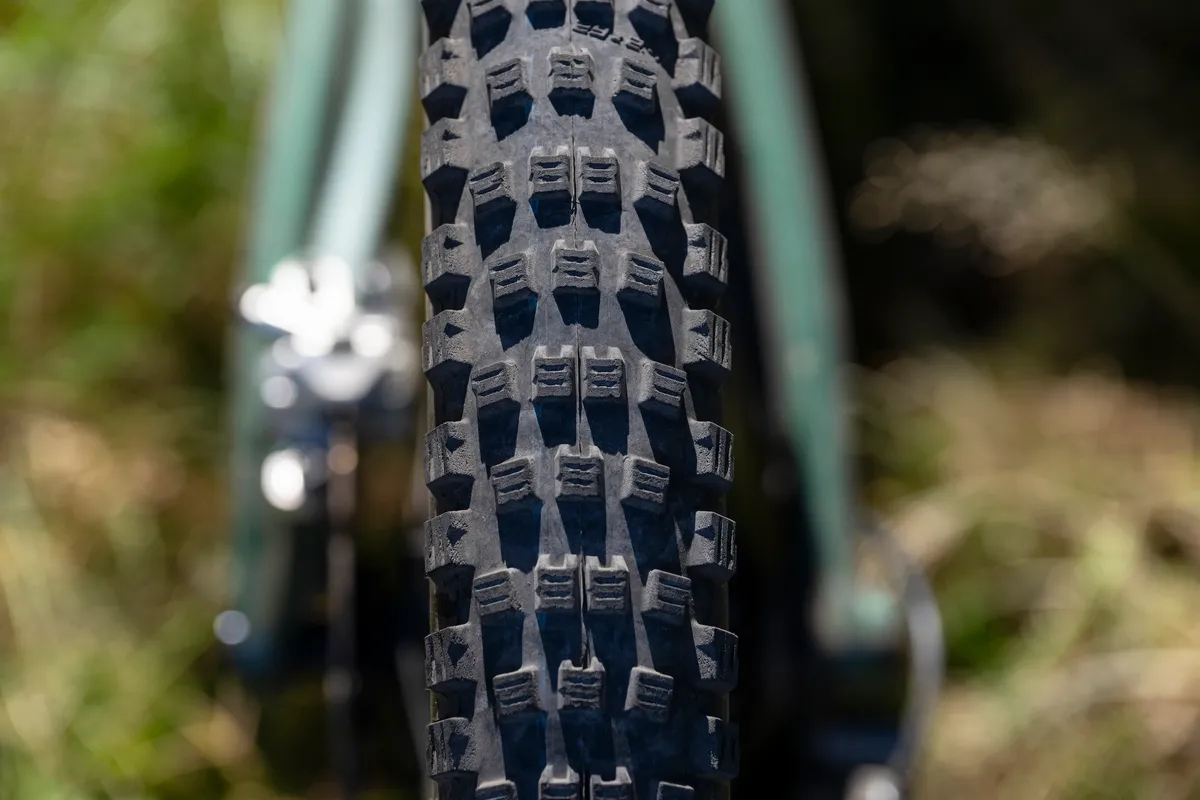
The loop had two major climbs, some surprisingly technical descents and a few evil false flats into headwinds. The weather was classically Scottish, with enough warmth to make even the best waterproofs a sweaty mess, but enough rain to ensure you came back from a lap soaked.
The Ranger, though, took it in its stride. Over rough singletrack climbs, the bike pedalled well, while when things got wild, I was happy slinging it into berms and rattling through rocks. I won’t profess to have loved the racing (the simultaneous cramping of both thighs was a particular low-light), but I can’t complain about the bike.
It can’t have held me back either, because despite a packed field, we won the Senior Pairs and came third in the Pairs overall.

All change
Soon after, I headed to the Alps for three weeks on a Bird Aether 9, with a 2.5in Maxxis Assegai MaxxGrip rubber front tyre, an extra 30mm of reach and 3 degrees off the head angle. Significantly different!
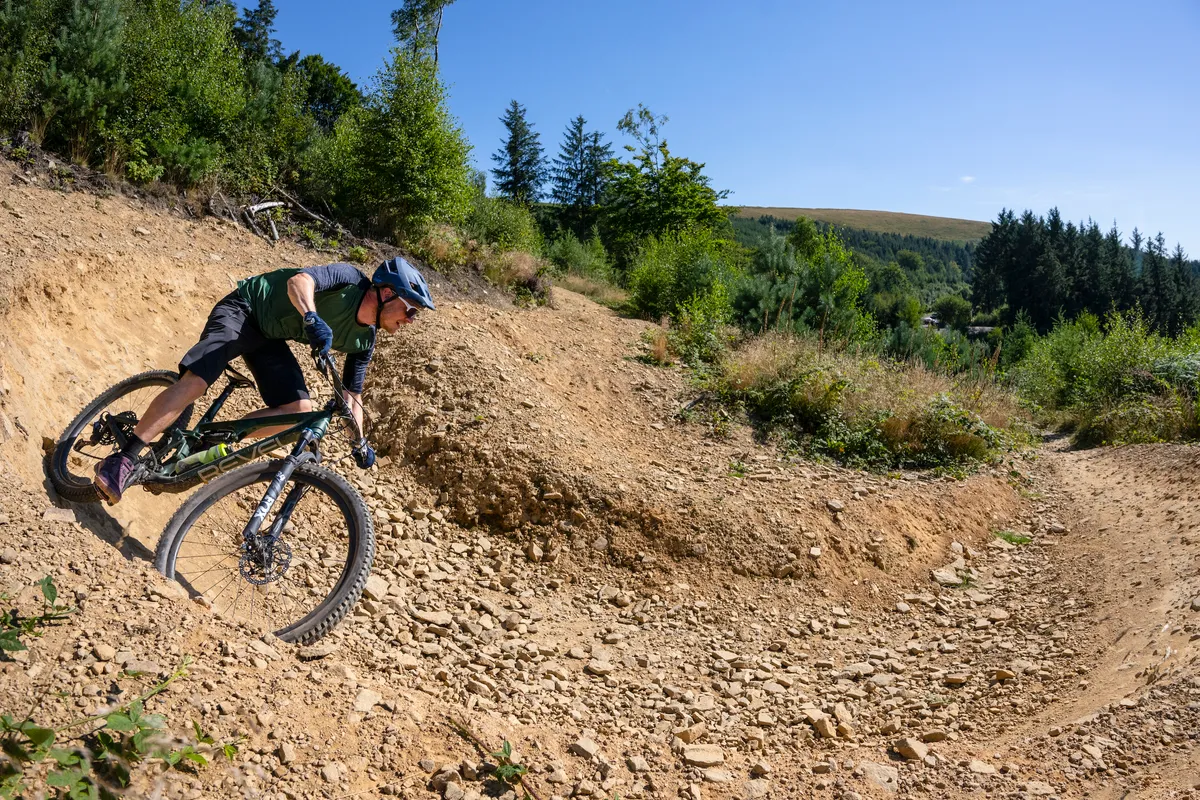
My first rides back on the Revel, on the baked trails of the Forest of Dean and Cwmcarn, with a thin sprinkling of fine dust over rocky hardpack trail, were a shock to the system – I certainly needed a few runs to re-adjust to what is, in reality, a shorter-travel, XC-specced bike, even if I had squeezed a Minion DHR II on the front in my quest for grip.
In my previous update, I mentioned that I’d received some grease for the rear hub to quieten it down. I have to admit how surprised I am at how effective that’s been – from one of the loudest hubs I’ve used to one of the quietest. The pawls still engage fine, and I think the extra grease probably kept some of Scotland’s splashes at bay too.
Revel Ranger custom build update one
A couple of months have passed since I first rode the Ranger, however with our Bike of the Year test only just coming to a close, I’ve not piled on quite as many miles as I would like.
That’s not to say the bike has been collecting dust in the back of the garage. A bank holiday weekend provided sunny weather and ridiculously buff trails and it felt rude to not bring out my little speed machine for a rally around some hard-baked tracks in the forest.

While I never doubted the Ranger's rocket-ship demeanour, when there’s no mud holding you back, the bike begs to be ridden faster than ever.
Flat corners could be railed, doubles popped, and roots that previously left me puckering up were despatched with absolute confidence.
It’s at times like this that one forgets the Ranger has just 115mm of travel at the back. The loud clang as the carbon rim works its way through the lightweight, skinny carcass of the Wicked Will out back when slapping it into roots quickly reminds you though.
Fortunately, no damage has been done to either tyre or rim, testament to the quality of mountain bike components these days.
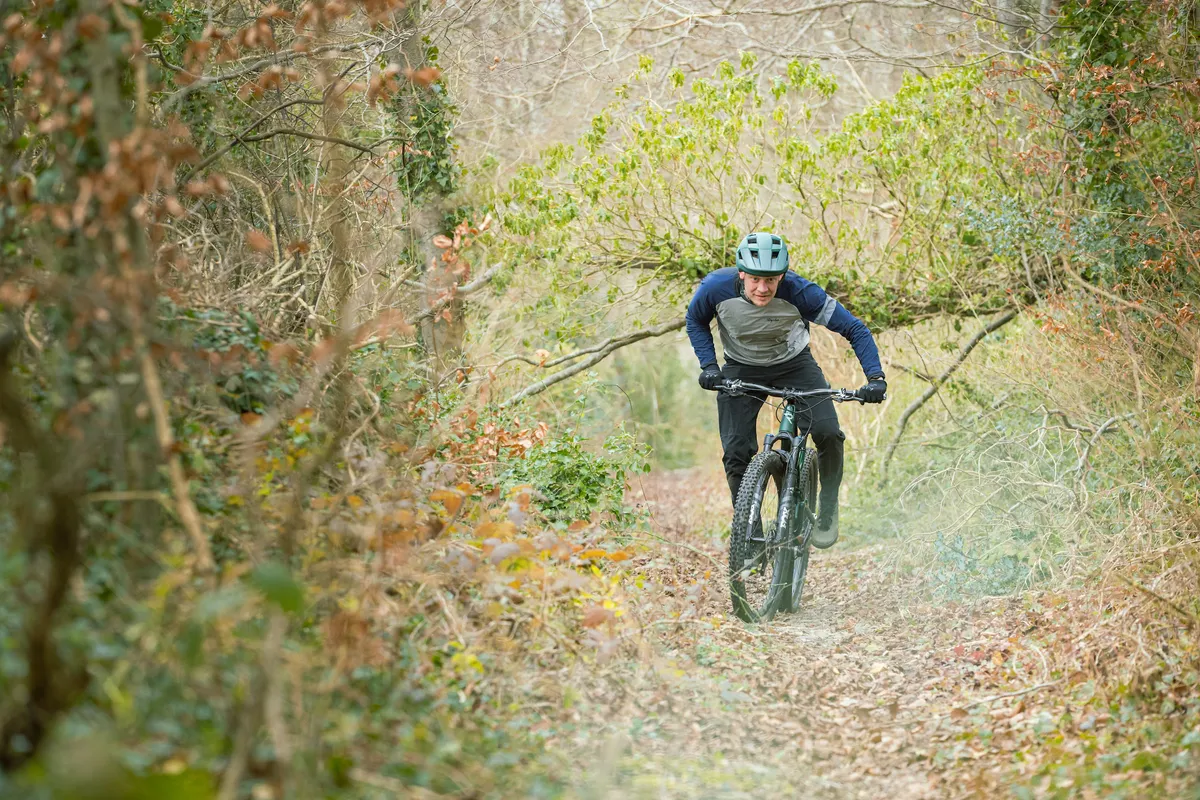
I've also worked a touch on suspension setup recently. In my original review of the bike, I mentioned that I found getting the back end just right was tricky at times.
During my last ride, it just felt that the rear suspension was a little too bobby on smooth climbs. While the SIDLuxe shock has a compression lever, it just toggles from open to firm, with no intermediate adjustments. However, though I like a fast rebounding rear end, adding just a couple of clicks of rebound damping seems to have stopped the pogoing and made it calmer on the climbs.
Kit conundrums
While I’m not a massive fan of Schwalbe’s SpeedGrip compound usually, I have to admit that the harder-compound rubber has a real turn of speed in the right conditions. The Wicked Will on the back is as fast a trail tyre as I’d want on a bike, and adds real zip. Up front, the Nobby Nic adds just a hint more grip and control with its slightly wider-spaced, deeper tread.

One thing I, and my riding buddies, noticed is how loud the Silt hubs are. While I’m not after silence, I felt the freehub was just that little bit too distracting. So, they popped some of their MV1 grease over to me. Its thicker viscosity quietens things down a touch – a welcome modification in my book.
The Fox Step-Cast 34 is narrower than most forks, to help save weight. This makes fitting a fender harder, because there’s less clearance than normal.
There aren’t many full-length options out there for the fork, even though it has bolt holes in the back of the arch (Syncros does a stubby one), but I’ve squeezed a MudHugger in there with zip-ties. It’s a tight fit, but I can just about get away with it.
It requires careful placement, because if I bang the fork through its travel the guard does occasionally buzz on the tyre.
I’ve also not yet been out in really claggy mud with it – that’ll be the true test.
Revel Ranger custom build specification and details
I've initially put together this build as a fairly lightweight XC-DC (cross country-downcountry) bike. This means skinny forks, light wheels and fast-rolling rubber.
The bike’s happy to take a 120mm fork, and so up-front Fox’s 34 SC Performance takes centre stage. The SC stands for Step Cast – that’s the stepped lower legs that shave weight and create the fork’s narrower stature. The 34mm stanchions remain, though, so chassis stiffness isn’t impacted on too much.
The Performance-level fork gets the relatively basic GRIP damper – it’s not as externally tuneable as the FIT4, but its sealed cartridge performs well. Plus, it’s upgradeable in the future if I want a little more control over the fork’s performance.
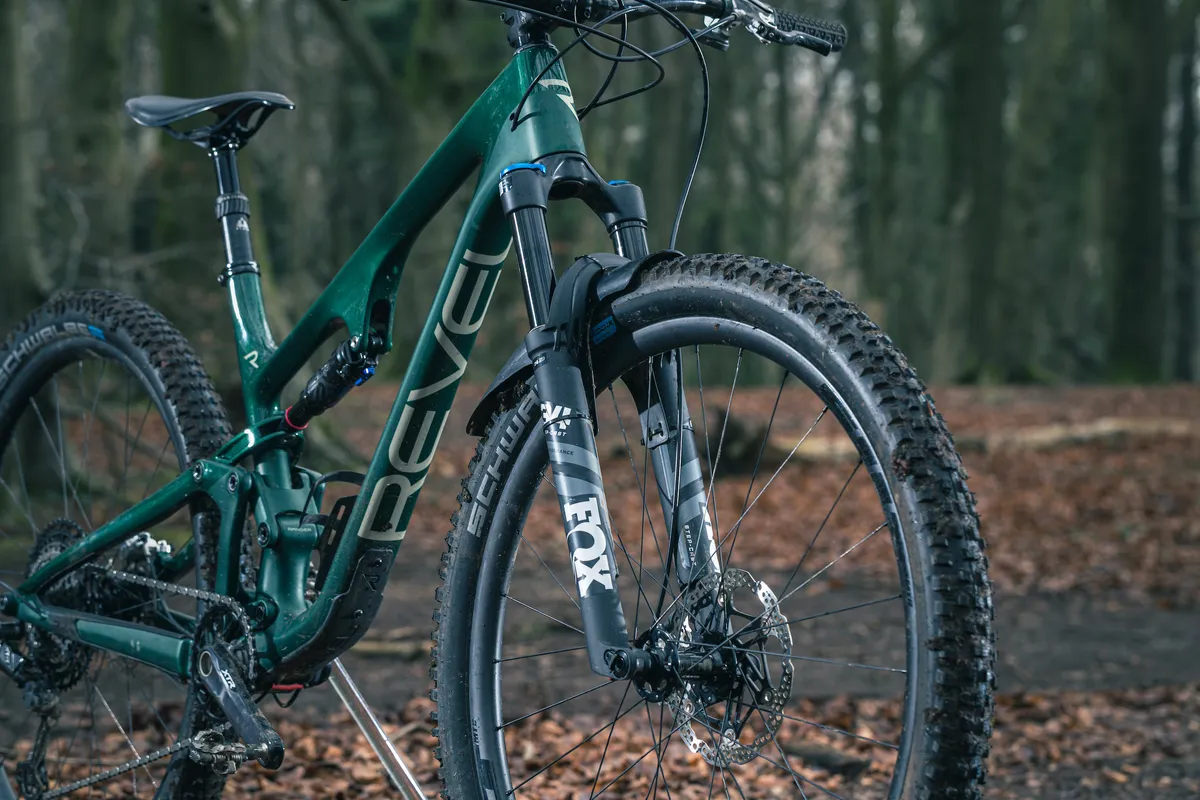
I’ve gone to Silt for the wheels. Silt is an emerging brand, offering good-value wheels with their own (very loud!) freehub.
The XC Carbon model I’ve got costs £800, which is very well priced for carbon hoops, and yet weighs an impressive 1,400g on my scales for the pair. Their 27mm internal width gives plenty of volume to the Schwalbe tyres I’ve popped on for now – a Nobby Nic at the front and the excellent Wicked Will at the back.
I wanted a fast-rolling set of rubber that still has a bit of bite in the mud. While the Addix Speed compound isn’t the stickiest, I’m hoping the new tread pattern on the Nobby Nic will perform in the slop, and I know the Wicked Will does its job pretty well.
We all know that drivetrain availability is tight at the moment, so I dug around in the office for some gears. If I had found a GX or SLX drivetrain, I would have been really happy. However, I tracked down an XTR crank, shifter and derailleur, and felt it would be rude to say no.

This left me searching for a few finishing parts – Unite fired over a 34t direct mount chainring for the cranks, while Hope furnished me with a threaded bottom bracket. I've also popped on Hope's lightweight XCR brakes that I reviewed in 2021.
Much like the drivetrain, I had a dig around for the rest of the build. A PNW Loam dropper holds a remarkably light Fabric ALM saddle that had been on a road bike of mine for a few years, and I tracked down a 50mm-long Race Face stem and 800mm Nukeproof bar in the garage.
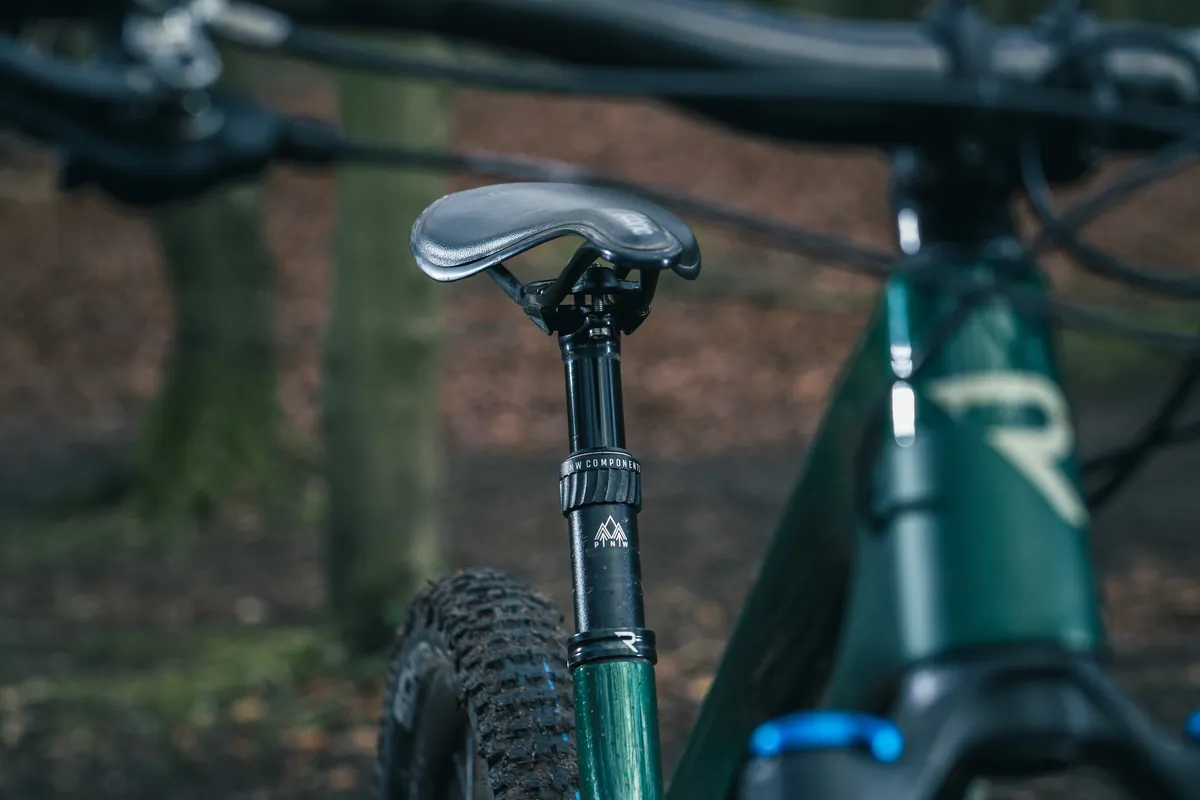
Revel Ranger custom build specification
- Sizes (*tested): S, M*, L, XL
- Frame: Carbon
- Fork: Fox 32 SC Performance, 120mm
- Shifters: Shimano XTR
- Derailleurs: Shimano XTR
- Cranks: Shimano XTR, Unite 34t chainring
- Wheelset: Silt XC Carbon
- Tyres: Schwalbe Nobby Nic 29x2.4 Addix Speed (f), Wicked Will 29x2.4 Addix Speed (r)
- Brakes: Hope XCR 180/160 rotors
- Bar: Nukeproof Horizon 800mm
- Stem: RaceFace Aeffect 50mm
- Seatpost: PNW
- Saddle: Fabric ALM
Revel Ranger custom build geometry
The geometry of the bike is modern, without being excessively 'out there'.
This means the reach is good at 473mm (large), and there's a short seat tube measuring 439mm, allowing longer droppers.
The head angle isn't super-slack at 67.5 degrees, and the 75.3-degree seat angle isn't overly steep – though with the saddle pushed forward and the rear end not sagging too much, it's a comfortable place to be.
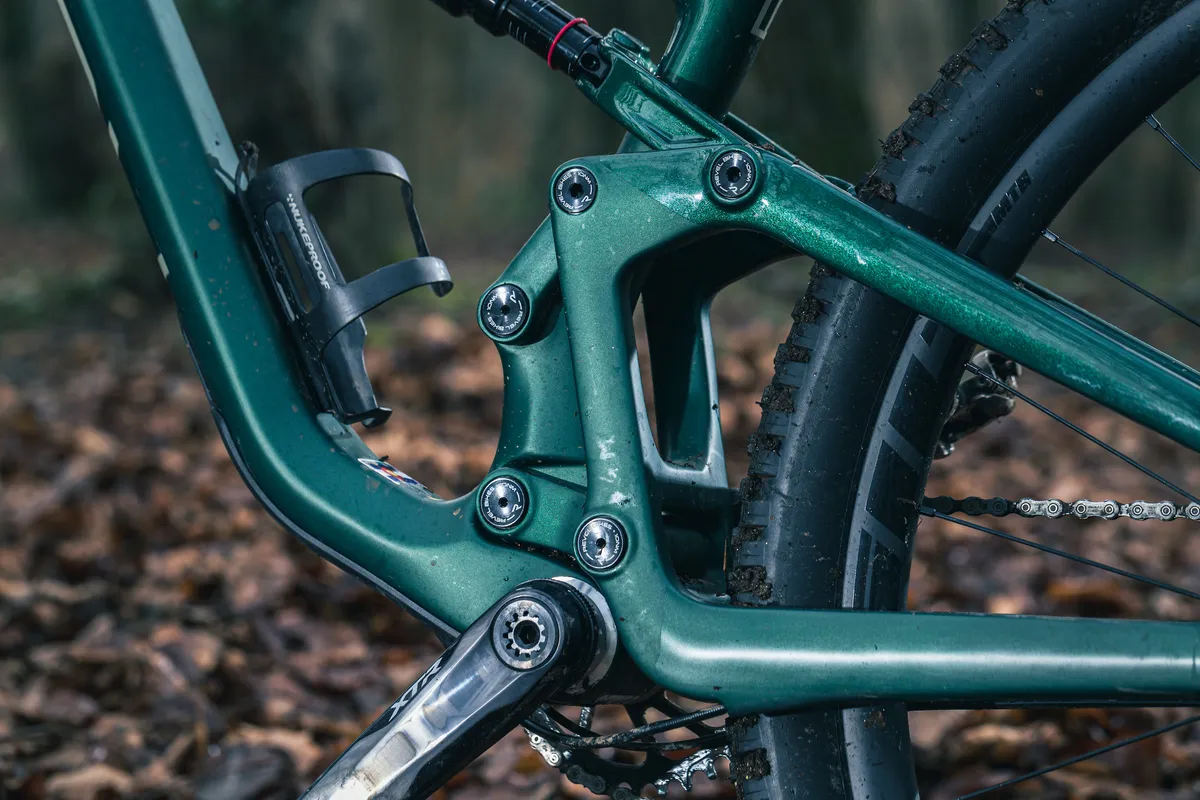
Revel Ranger geometry
| Size | Small | Medium | Large | Extra Large |
|---|---|---|---|---|
| Effective top tube length (mm) | 594 | 616 | 639 | 667 |
| Seat tube length (mm) | 373 | 403 | 439 | 457 |
| Seat tube angle (degrees) | 75.3 | 75.3 | 75.3 | 75.3 |
| Chainstay length (mm) | 436 | 436 | 436 | 436 |
| BB height (mm) | 338 | 338 | 338 | 338 |
| Head angle (degrees) | 67.5 | 67.5 | 67.5 | 67.5 |
| Wheelbase (mm) | 1,146 | 1,170 | 1,194 | 1,223 |
| Reach (mm) | 430 | 453 | 473 | 498 |
Why did I choose this bike?
The Ranger is a 115mm downcountry bike. I tested a full-build Ranger earlier in 2022, and loved its cheeky on-trail demeanour, with pert pedalling performance and still just enough in the bank to get me out of trouble… most of the time!
Over the course of the last few months, I’ve been hoarding bits and pieces to put on it. The aim is to build a fairly light and fast bike, and I’m going to try to use parts from smaller brands where possible. Over the year, though, I might see how far I can push the downcountry credentials – can it take, and revel in, big forks and grunty tyres? Time will tell.
An efficient pedaller deserves some long rides, so in between hammering local trails as close to flat-out as possible, I’ve got a few long-distance tricks up my sleeve.
It'll sit in a stable of three regular rides. A Lauf True Grit (my 2021 BikeRadar long-term bike) provides curly-bar adventurous fun, while a Marin El Roy will take centre stage when I need a bike with a wheelbase that stretches into next week. As such, the Ranger should be the perfect 'average' ride.
Revel Ranger custom build initial setup
With the bike still pretty new to me, it's largely set up to manufacturer recommendations.
I'm running around 22 per cent sag at the back, which I found the best balance of comfort and pedalling efficiency when I tested the full-build bike.
I've stuck a couple of extra psi in the forks, compared to the sticker on the back – just from personal preference.

The brakes are set relatively shallow in angle, as per my preference, but with only lever reach adjustable I've had to balance bite point and lever reach – it's not perfect, yet.
The tyres are inflated to 22psi on the front and 24psi at the rear, with 60ml of whatever sealant I could cobble together from the cupboard in my garage!
I'm swapping between Shimano XTR Race and Crankbrothers Mallet pedals, because I'm testing shoes at the moment and want to test each shoe with both pedal systems (as well as Nukeproof Horizon CL pedals, to see how they interact with a larger platform).
As someone utterly averse to bicycle maintenance, I was pleasantly surprised at how easy the bike was to build up. The internal cable routing was spot on, with minimal jiggling needed to get all the outers and hoses from bar to rear triangle or dropper. I'm also a stalwart fan of threaded bottom bracket shells – big tick, Revel.
Revel Ranger custom build ride impressions
Thanks to ongoing Bike of the Year testing, I've not had quite as much time on the bike as I'd like. However, I've certainly had a couple of opportunities to open the throttle on it and get a good impression of how the year's going to pan out.
As I noted in my first ride review of Revel's full-build Ranger, getting the suspension sag just right is a touch trickier than on longer-travel bikes, especially when balancing pedalling performance and smoothness through the pedals.
I've got it set up pretty well, though. Under power, the Ranger doesn't give many excuses. Stood-up efforts result in punchy acceleration, giving you the encouragement to push a bit harder until your lungs give up. There's a little bit of scrabble from the back tyre when doing this, but it's a harder compound rubber, so that's forgivable in damp winter conditions.

Sat down, the suspension doesn't rob power, but does enable the rear wheel to move over jarring stretches of rock. This means it's easy to keep the pedals turning over the rough.
Descending performance seems strong too. The shape is good for a bike with this much travel. It's no super-long slugger, so you have to wind back expectations on the steepest, roughest descents, but sling it into some woodland singletrack or rally it down a trail-centre descent and it comes back asking for more.
In terms of kit, there's not a huge amount to complain about. Shimano's XTR drivetrain represents, in my opinion, the best cable-actuated gears around. The Hope XCR brakes are good, if not the punchiest, and other than the volume of the freehub, the Silt wheels are broad, comfortable and inflate easily.
The Fox 34SC is a decent fork too. I really like the simple GRIP damper – it's got a lighter tune than the GRIP2, and thus doesn't feel as harsh on rattly descents.
Revel Ranger custom build upgrades
As I've specced the bike, I'm hoping I won't need to upgrade much.
There are rumours of some new suspension being launched later this year, and it looks as though I might get a new pair of forks early.
I'm really happy with the Ranger in a lighter-weight build with 120mm forks, however Revel says the bike can take 130mm. So, at some point down the line, I think there'll be 10mm more squish up front, in a burlier chassis.
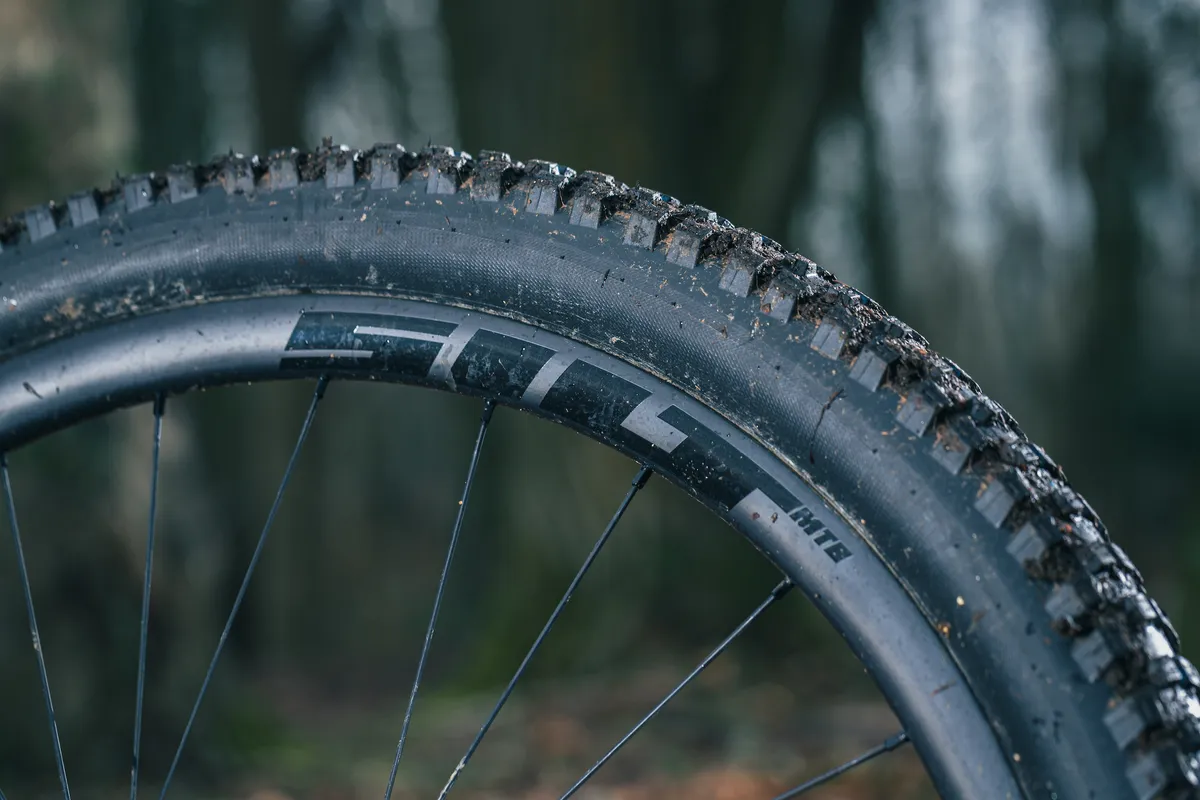
As such, when we get closer to summer, I foresee the Ranger getting a build that's further into trail-bike territory. This'll cover the forks, maybe the shock and the tyres. Everything else should be more than capable of dealing with whatever 130mm forks can throw up.
As one of BikeRadar and MBUK's technical editors, I'll inevitably get some kit to try out on the bike, so keep your eyes peeled for that.
Product
| Brand | revel |
| Price | 3699.00 GBP |
Features
| br_rearShock | RockShox SIDLuxe Ultimate |
| br_availableSizes | S, M, L, XL |
